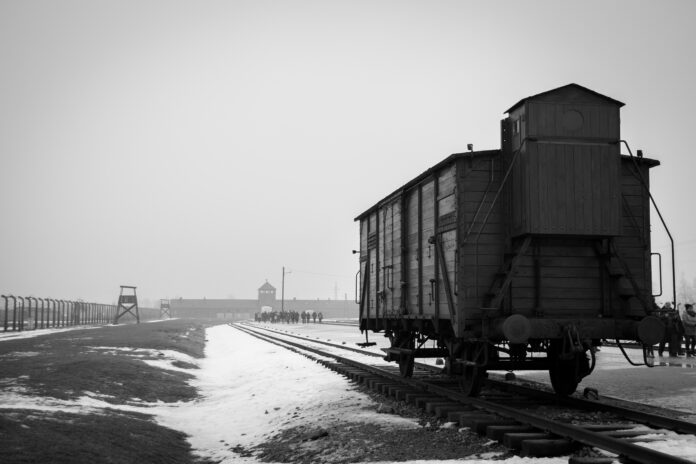The men, women and children transported to Treblinka, it needn’t be said, were offered none of those considerations.
The only concern the Nazis had was that the train occupants be transported to their deaths as efficiently as possible.
Kerstin von Lingen’s book “Allen Dulles, the OSS, and Nazi War Criminals” quotes Karl Wolff, Gestapo head Heinrich Himmler’s chief of staff, writing to deputy transport minister Albert Ganzenmueller:
“I note with particular pleasure after reading your communication that a train with 5,000 members of the chosen people has been running daily [to Treblinka] for 14 days, and that we are accordingly in a position to continue with this population movement at an accelerated pace…”
The Nazis’ concern for animals is widely known. In the BBC series “The Nazis: A Warning from History,” an eyewitness tells of Hitler, ym”s, covering his eyes if a movie he was watching showed cruelty to, or the death of, an animal. A famous photo shows him feeding deer and is captioned “Der Führer als Tierfreund”—“The Führer as an animal lover.”
Such association of Nazi concern for animals forced PETA, the animal rights group (which, in its 2004 “Holocaust on Your Plate” campaign, juxtaposed images of animals in slaughterhouses with images of humans in Nazi concentration camps), to protest that even evil people can have lofty ideas.
Concern for animals’ welfare is indeed a lofty idea, and fully present in Judaism. The prohibition of tzaar baalei chayim, causing animals unnecessary pain, is considered a Torah commandment by many poskim.
At the same time, though, the Torah considers animals to be subject to the needs of humans. While it must be accomplished in as painless a way as possible, utilizing animals for work and even killing them for food or leather are fully sanctioned by the Torah.
In the Jewish mesorah, the hierarchy of creation noted are: domeim, tzomei’ach, chai and medaber: “still” (mineral), “growing” (vegetation), “living” (animal) and “speaking” (human).
The Torah’s description, concerning the generation of the Mabul, to people as basar, “flesh” (Bereishis 6:3,13), reflects the fact that people of that era didn’t distinguish between humans and animals. Society had devolved to the point where it considered all “flesh” to be essentially the same. Humans were simply two-legged beasts.
Such devolution reappeared in 1930s Germany.
In fact, Propaganda Minister Joseph Goebbels reportedly described his boss’ hatred of Judaism as stemming in part from the Jewish insistence on a qualitative distinction between humans and animals.
It’s a distinction that’s endangered even today.
To read more, subscribe to Ami





















